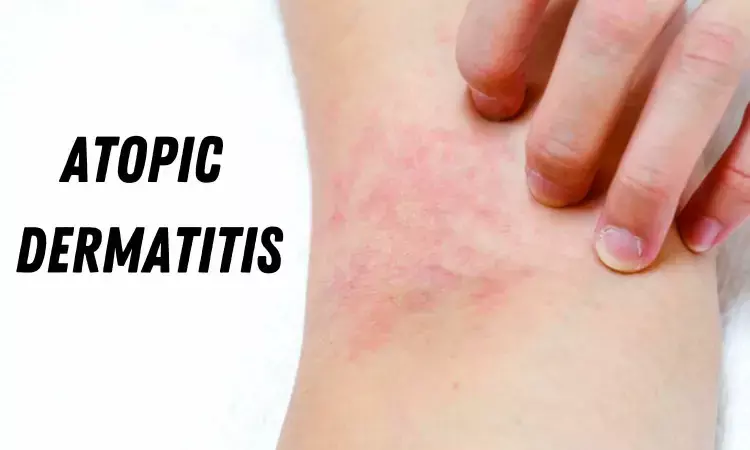- Home
- Medical news & Guidelines
- Anesthesiology
- Cardiology and CTVS
- Critical Care
- Dentistry
- Dermatology
- Diabetes and Endocrinology
- ENT
- Gastroenterology
- Medicine
- Nephrology
- Neurology
- Obstretics-Gynaecology
- Oncology
- Ophthalmology
- Orthopaedics
- Pediatrics-Neonatology
- Psychiatry
- Pulmonology
- Radiology
- Surgery
- Urology
- Laboratory Medicine
- Diet
- Nursing
- Paramedical
- Physiotherapy
- Health news
- Fact Check
- Bone Health Fact Check
- Brain Health Fact Check
- Cancer Related Fact Check
- Child Care Fact Check
- Dental and oral health fact check
- Diabetes and metabolic health fact check
- Diet and Nutrition Fact Check
- Eye and ENT Care Fact Check
- Fitness fact check
- Gut health fact check
- Heart health fact check
- Kidney health fact check
- Medical education fact check
- Men's health fact check
- Respiratory fact check
- Skin and hair care fact check
- Vaccine and Immunization fact check
- Women's health fact check
- AYUSH
- State News
- Andaman and Nicobar Islands
- Andhra Pradesh
- Arunachal Pradesh
- Assam
- Bihar
- Chandigarh
- Chattisgarh
- Dadra and Nagar Haveli
- Daman and Diu
- Delhi
- Goa
- Gujarat
- Haryana
- Himachal Pradesh
- Jammu & Kashmir
- Jharkhand
- Karnataka
- Kerala
- Ladakh
- Lakshadweep
- Madhya Pradesh
- Maharashtra
- Manipur
- Meghalaya
- Mizoram
- Nagaland
- Odisha
- Puducherry
- Punjab
- Rajasthan
- Sikkim
- Tamil Nadu
- Telangana
- Tripura
- Uttar Pradesh
- Uttrakhand
- West Bengal
- Medical Education
- Industry
Crisaborole effective against atopic dermatitis in Asian patient population

In Japanese and Chinese patients with mild to severe atopic dermatitis, crisaborole treatment was efficacious and well tolerated, says an article published in The Journal of Dermatology.
Atopic dermatitis is a chronic inflammatory skin illness that has a substantial influence on patients' and their families' general well-being. Crisaborole ointment, 2%, is a nonsteroidal phosphodiesterase 4 inhibitor that has been licensed in several countries for the treatment of mild-to-moderate atopic dermatitis. However, because a small fraction of the overall patient population in the pivotal trials was Asian, Lin Ma and colleagues undertook this study to investigate the safety and effectiveness of crisaborole in the Asian population with atopic dermatitis.
CrisADe CLEAR was a multicenter, randomized, double-blind, phase 3 research that looked at the effectiveness and safety of crisaborole ointment in Japanese and Chinese patients aged 2 years with mild-to-moderate atopic dermatitis affecting 5% of their treated body surface area. For 28 days, patients were randomly randomized to receive crisaborole or vehicle twice daily. At day 29, the primary outcome was the percentage change from baseline in the Eczema Area and Severity Index total score. Improvement and success on the Investigator's Static Global Assessment score at day 29 and change from baseline on the Peak Pruritus Numerical Rating Scale at week 4 were additional goals. The frequencies of treatment-emergent adverse events, major adverse events, and clinically significant alterations in vital signs and clinical laboratory indicators were used to assess safety.
The key findings of this study were:
1. At day 29, individuals treated with crisaborole had a substantially larger reduction in percentage change from baseline in Eczema Area and Severity Index total score compared to vehicle.
2. Those treated with crisaborole had significantly greater response rates for Investigator's Static Global Assessment improvement and success at day 29 than those treated with vehicle.
3. At week 4, crisaborole-treated patients had a considerably larger reduction in change from baseline on the Peak Pruritus Numerical Rating Scale than vehicle-treated patients (P = 0.0009). There were no new safety signals discovered.
In this research, crisaborole-treated patients outperformed vehicle-treated patients in all primary and significant secondary objectives, and no new safety concerns were discovered. Crisaborole was efficacious and well tolerated in Chinese and Japanese individuals with mild-to-moderate Alzheimer's disease aged 2 years.
Reference:
Ma, L., Zhang, L., Kobayashi, M., Tao, X., Qian, Q., Cheng, H., Liu, S., Zhou, Y., Chen, Y., & Zhang, J. (2023). Efficacy and safety of crisaborole ointment in Chinese and Japanese patients aged ≥2 years with mild‐to‐moderate atopic dermatitis. In The Journal of Dermatology. Wiley. https://doi.org/10.1111/1346-8138.16792
Neuroscience Masters graduate
Jacinthlyn Sylvia, a Neuroscience Master's graduate from Chennai has worked extensively in deciphering the neurobiology of cognition and motor control in aging. She also has spread-out exposure to Neurosurgery from her Bachelor’s. She is currently involved in active Neuro-Oncology research. She is an upcoming neuroscientist with a fiery passion for writing. Her news cover at Medical Dialogues feature recent discoveries and updates from the healthcare and biomedical research fields. She can be reached at editorial@medicaldialogues.in
Dr Kamal Kant Kohli-MBBS, DTCD- a chest specialist with more than 30 years of practice and a flair for writing clinical articles, Dr Kamal Kant Kohli joined Medical Dialogues as a Chief Editor of Medical News. Besides writing articles, as an editor, he proofreads and verifies all the medical content published on Medical Dialogues including those coming from journals, studies,medical conferences,guidelines etc. Email: drkohli@medicaldialogues.in. Contact no. 011-43720751


